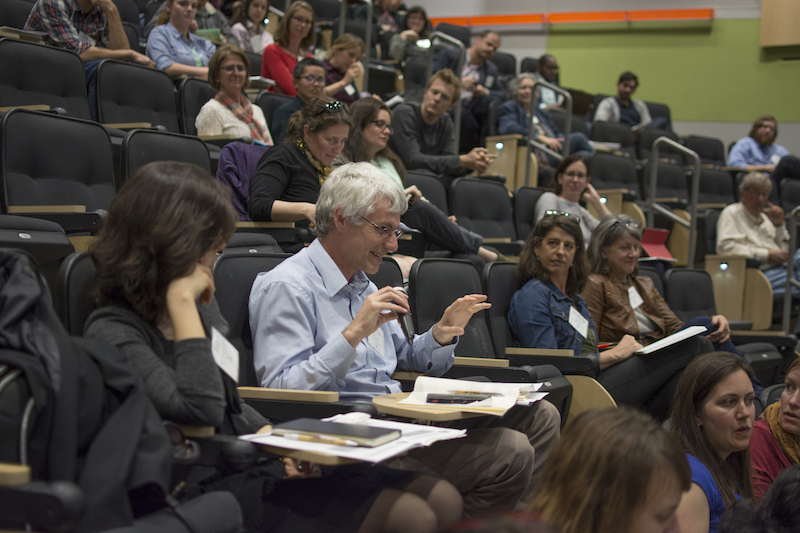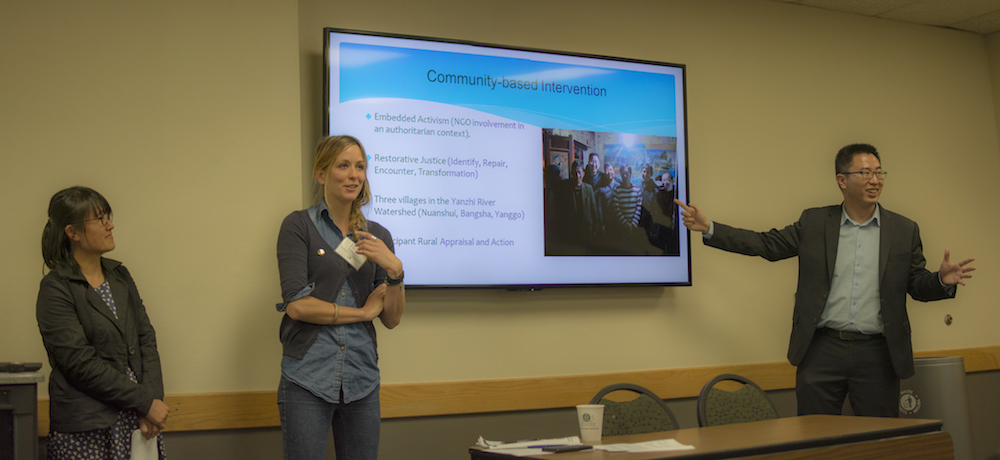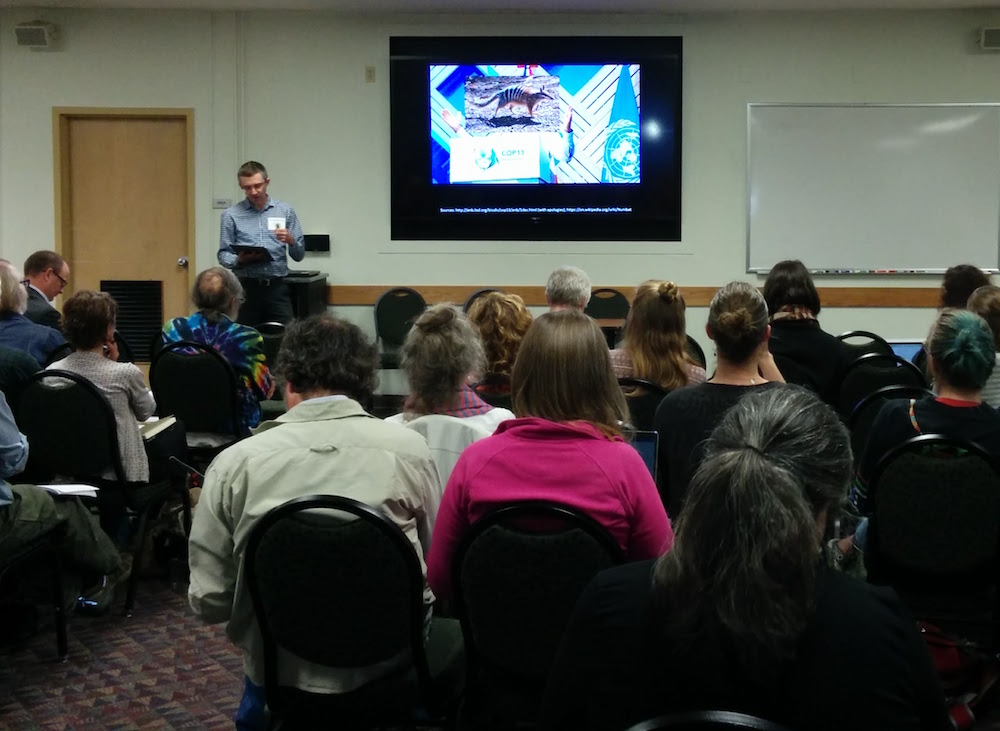What does the Anthropocene mean for environmental justice?
The concept of environmental justice originated in the United States in the 1970s – emerging from a confluence of religious activism, consumer and labour mobilisations around worker health and safety and protests over the impacts of toxic waste dumping and pollution on people of colour. The idea recognises that environmental issues, from groundwater contamination to the shuttering of factories, don’t affect all people equally. Some groups, like minority communities or the poor, bear the brunt of these harms more than others. Forty years after those origins, researchers in environmental justice are grappling with a new environmental paradigm: the Anthropocene. That’s the name for a proposed geologic epoch named after the influence of people on the world.
It was also the topic of discussion of a symposium that ran from 24 to 25 April 2017 in Fort Collins, Colorado. There, more than 200 researchers and activists gathered to discuss how environmental justice can evolve in the “human age.” The organisers of the event belonged to the Environmental Justice Working Group, a team of researchers sponsored by the School of Global Environmental Sustainability at Colorado State University (CSU).
Two members of this team, political scientist Dimitris Stevis and sociologist Stacia Ryder, sat down to talk with Future Earth. They discussed this international event and their own research on issues of justice in rural towns in Colorado. Stevis and Ryder suggest that today, environmental justice can help to bring attention to communities that have been left behind in the pursuit of a greener world.
Researchers at CSU, which co-hosts Future Earth’s Global Hub in Colorado, are major contributors to the Systems of Sustainable Consumption and Production Knowledge-Action Network. Learn more about that research collaboration here.

An audience member asks a question during a talk at April's symposium. Photo: Christopher Kimble
Future Earth: The concept of the Anthropocene is gaining momentum in a lot of different arenas – in the sciences and even in public consciousness. What does that mean for environmental justice?
Dimitris Stevis: There has long been a debate with respect to the environment between aggregative and distributive perspectives: It began with debates about the limits to growth in the late 1960s, global change in the 1990s and now the Anthropocene.
In response to the tendency to emphasise the aggregate nature of these challenges, there were people who said that looking at the world as an undifferentiated whole obscured as much as it revealed. We also have to ask the question who is responsible for this situation we are in, and how can we deal with this situation? How can we confront the problems of, say, the Anthropocene in an equitable fashion, a fashion that recognises that not everyone is equally responsible?
Today, there are those who say, “We shouldn’t just call it the Anthropocene. Perhaps we need to think about this era in terms of the origins and forces that have brought it about.” Some people like to use a term that is less common but is not really inaccurate: the Capitalocene.
FE: How has your group examined those issues of equity, or inequity, in the real-world?
Stacia Ryder: I’ve been studying regulation and resistance to oil and gas development in northern Colorado. If we look at Weld County, they have a very large number of wells – over half of the working wells in the state. The question is how are people being disproportionately impacted by that? Or how are people disproportionately benefitting from it?
Right now, for example, there are community members who are frustrated because there is a 24-head well pad site proposed that meets the regulations of being 1000 feet away from a school but that would be less than 500 feet away from some portions of the schoolyard. There are concerns because we do know that children are much more vulnerable to many toxins. This school is primarily low-income and has many Latino children, so there are also concerns that people and parents in the community may not even be informed that this is happening or may not believe they have the space to freely speak up about their concerns for a variety of contextual reasons.
FE: It seems like a lot of the focus of environmental justice is on people who are “invisible” – at least to those who are making the decisions.
DS: Quite often, even today, people talk about the history of the world or important events without including women or slaves or kids or migrants. It’s not because they don’t know they were, or are, there. They know they were there, but they didn’t think they were worthwhile.
I think environmental justice forces us to ask the question of why is somebody left out. We have to try to look at our world holistically: What are impacts on the totality of human beings and also on the totality of nature?

Presenters field questions from the audience at a symposium session. Photo: Christopher Kimble
FE: Do those considerations mean that we should take a different approach to studying the Anthropocene?
DS: Yes, it does. The language of the Anthropocene is that the Earth as a whole has been transformed by human beings, and we need to address that with all the tools of natural and physical sciences.
But I think also that, on occasion, some natural and physical scientists bring with them an approach that emanates from the fact that, traditionally, we think of those sciences as the apex of unbiased human knowledge. By extension the social sciences are seen as biased, militant, partisan and so on. That is particularly so when social scientists, as well as natural scientists, interested in environmental justice say, “Let’s slow down. Let’s not look at those kind of environmental problems only in their aggregate dimensions. Those are very important, but let’s look at how they affect particular categories of people, particular habitats, the relationships between human beings and the environment. Let us look at questions of power and authority.”
SR: I think that the nature of the environmental justice challenges we’re facing today do require that we rethink what constitutes science and who we consider to be scientists or contributors to the advancement of scientific knowledge.
But we’ve been in our siloes for a very long time. For years and years, there have been discussions about breaking down those boundaries. I think that we really can do a better job of integrating knowledge. I think our symposium actually did a good job of that. I say that because we didn’t frame or advertise our symposium as interdisciplinary, though we did spread the word about it through various interdisciplinary venues. We invited people that we know work on this issue, we advertised it widely and made it free, so it was accessible to anyone who wanted to be there. In the end, the event was very interdisciplinary, and we received a lot of positive feedback about that.
FE: A lot of discussions at your symposium revolved around the idea of “just transitions.” What makes a transition just?
DS: The idea is that as transitions take place around the world, for any reason, you don’t want to discard the people of the past. It doesn’t necessary have to be associated with the environment. It could be transitions due to trade. It could be transitions due to the end of a war. It could be transitions due to automation.
In the 1970s, some people from labour unions, particularly one based in Denver, the Oil, Chemical, and Atomic Workers International Union, realised that the environment was very important and that the activities they were engaging in were destructive to the environment. Therefore, they had to be abandoned in the long-term. But the unions argued that this should take place in a humane way and that people should not be expendable, communities should not be expendable.

A packed room for a talk at the symposium. Photo: Dimitris Stevis
FE: How has the concept of just transitions evolved in the Anthropocene as we embrace new technologies like renewable energy and phase out older ones, such as coal power?
DS: Incredibly, it’s become more expansive. Traditionally, the concept of just transitions was limited to labour unions and communities left behind by a transition. But now people talk about just transitions of whole cities like Boulder, Colorado, or any other big place that says we’re going to have this fabulous green economy. People ask the question: Is everyone going to benefit from all the great things that this brave new green world is going to bring us?
SR: We’ve seen a lot of backlash from globalisation. Many people in rural communities in a variety of nations around the world have felt left behind by a process that was supposed to engage new technology to make us better connected and held a promise of a better future. For many people, that promise has not come through. That's one of the reasons that it’s very important for us move forward to really focus on these areas.
DS: For example, our municipal utility draws a great deal of energy from coal fire plants, and if we move into renewables or natural gas, then the coal mining communities like the town of Craig, Colorado, will either wilt away or export its coal to China or India. When we think about just transitions or green transitions, I think it’s very important to put it in time and space. When a city like Fort Collins, Colorado, or even a bigger city like Portland, Oregon, or California as a state decides to transition in a green direction they have to ask the question: Are our policies fair, and not only within our boundaries. Are we externalising the harm onto others?
DATE
July 21, 2017AUTHOR
Daniel StrainDimitris Stevis
Stacia Ryder
SHARE WITH YOUR NETWORK
RELATED POSTS
Spotlight on LMICs – Tired of Breathing in Pollutants? Time for Better Fuel Economy and Vehicle Standards
Future Earth Taipei Holds 2024 Annual Symposium
Spotlight on LMICs – The Future’s Juggernaut: Positioning Research as Anchors for Environmental Health